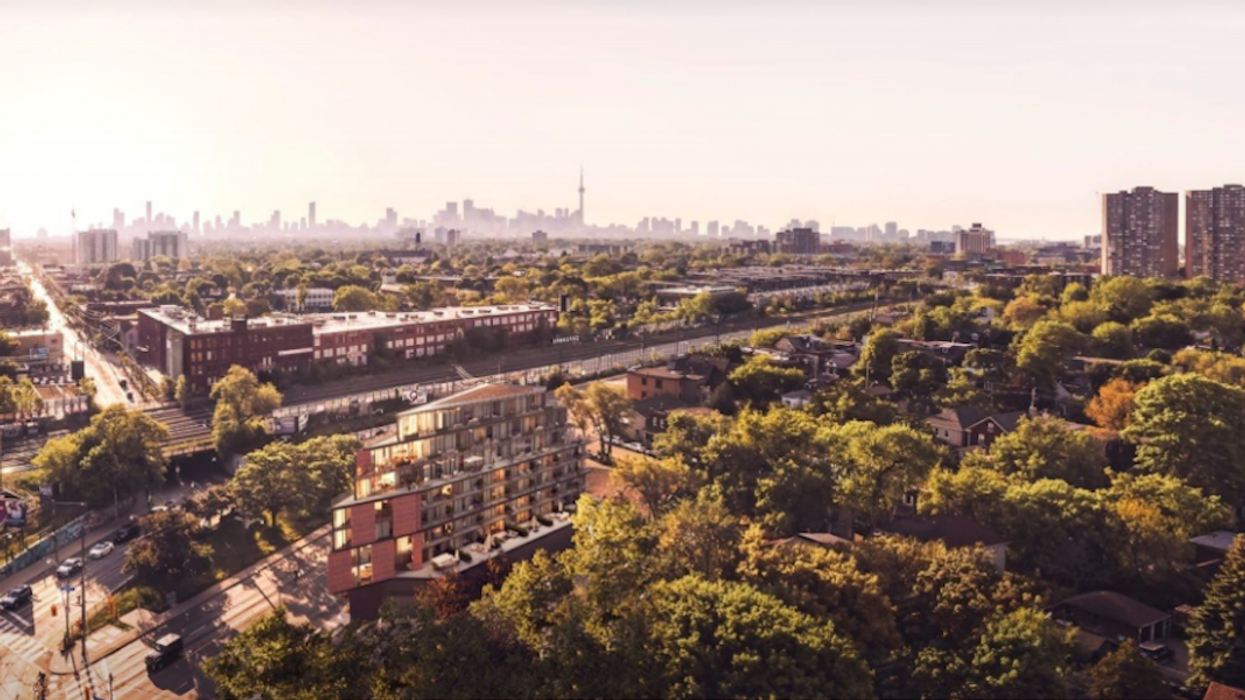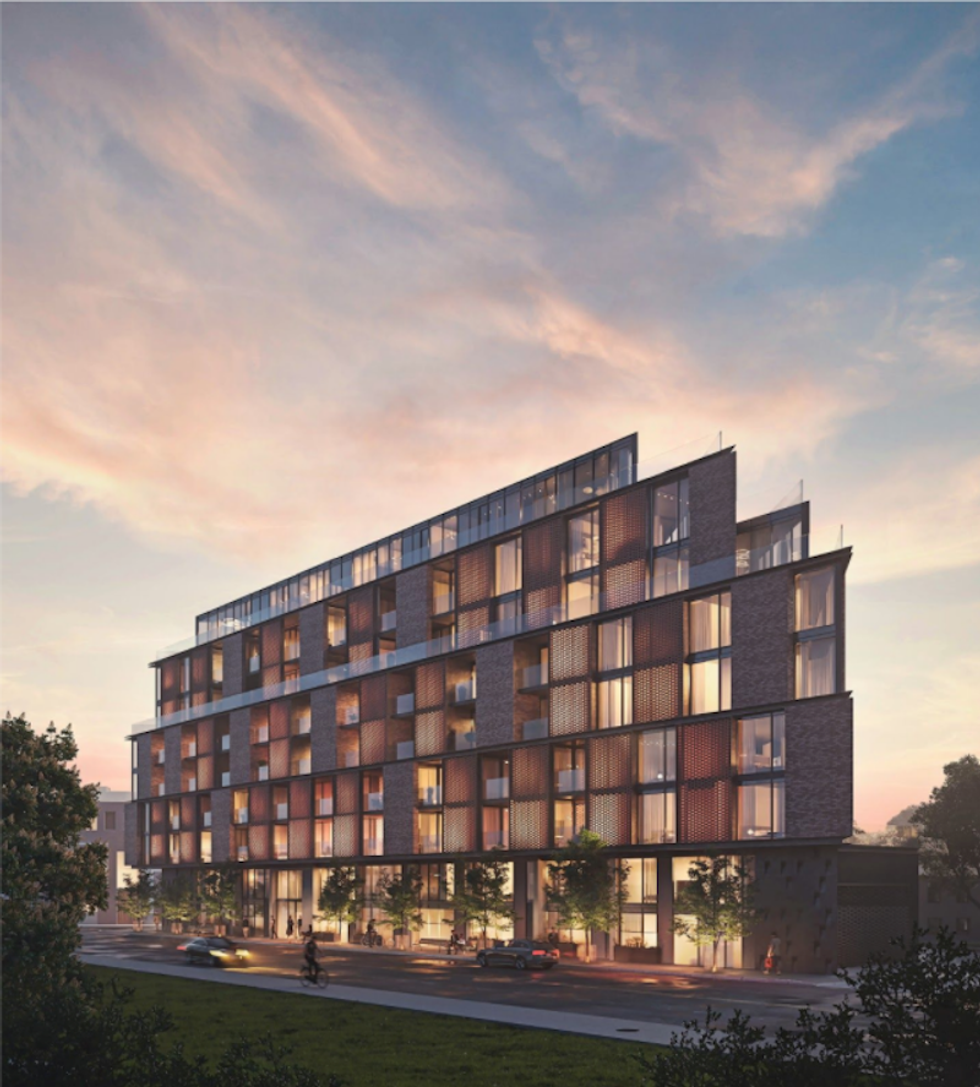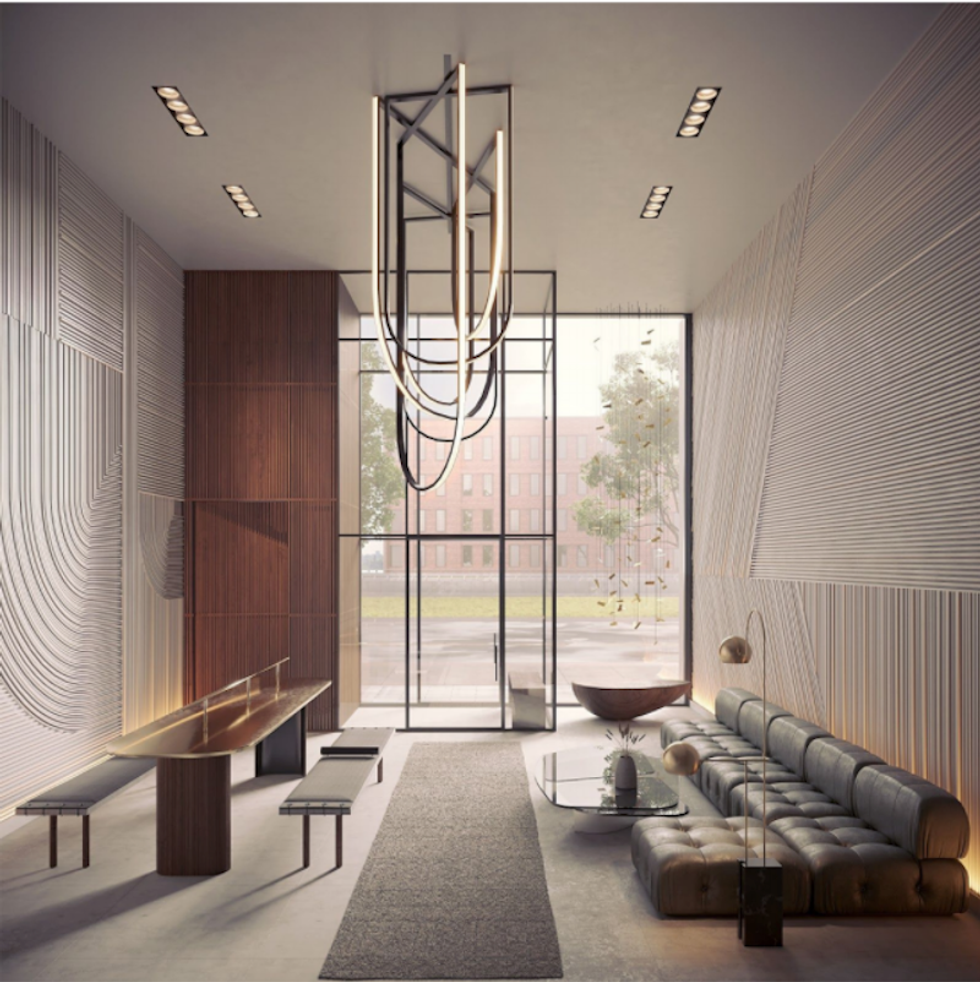Despite reports to the contrary, the “missing middle” isn’t nearly as hard to find as we’ve been told. Look closely and you’ll find mid-rise residential buildings -- four to ten storeys tall -- popping up with increasing regularity. Though the development industry much prefers towers and subdivisions and the fact that archaic municipal rules make it absurdly difficult to get civic approval, mid-rise is slowly but surely gaining favour.
Junction Point, a new eight-storey condo project on Dundas Street West, is a good example of a building type whose time has come.
Built by Gairloch Developments and designed by architectsAlliance, the elegant structure fits effortlessly into a context that would be inappropriate for the typical Toronto high-rise. Increasingly rare, the proposed project is intended to be occupied by owners rather than tenants. It’s unlikely to become an impromptu hotel like so many downtown towers. Finished in glass and brick, it clearly wants to be part of a precinct where repurposed factories and warehouses retain some of the grittiness of the area’s manufacturing past.
At the same time, Junction Point’s unabashedly sleek architecture leaves no doubt that this is an emphatically 21st-century design. This mix of old and new, so desperately needed in a city where buildings relate to each other like squabbling members of an unhappy family, is welcome in a part of town that encompasses the extremes of quiet residential neighbourhoods and serious industrial infrastructure. Overlooking the railway tracks that feature so prominently in The Junction, the two-part condo structure comprises a six-storey element atop a two-floor podium that addresses Dundas Street West directly. The upper section, which on the eastern end comes to a point sharp enough to slice bread, brings a vaguely ship-like feel to the project, a bow at one end, stern at the other.
For residents and neighbours, these mid-sized structures make a lot of sense. (Not that they are always popular with local politicians and their NIMBY constituents.) They fit in with the local landscape, which in Toronto tends overwhelmingly to be two or three floors, and add much needed residential capacity to a city threatened by the twin crises of a housing shortage and affordability. For aging locals wanting to downsize but stay in the ‘hood, and young families looking for a place to live not on the 50thfloor of some anonymous downtown condo skyscraper, schemes like Junction Point are ideal. On major city streets, especially those serviced by public transit, adding midrise density is a no-brainer.
“You’re going to see more midrise projects in family-friendly neighbourhoods that have tight levels of supply but extremely high levels of demand,” Gairloch founder Bill Gairdner told the Star back in 2014. “Midrises open up a new source of supply for people who want to move into these neighbourhoods.”
Gairdner, who set out on his own after six years with Freed Developments, has focused on midrise ever since.
"Toronto needs human-scaled buildings that invigorate the urban fabric. That's what our projects aim to be," he tells Storeys.
He isn’t alone. Midrise projects have appeared on Queen St. E., Ossington, Roncesvalles and, of course, The Junction. Even Toronto’s lamentable planning department has recognized the need for midrise; it recently allowed as-of-right construction up to six stories on ‘avenues’ such as Yonge, St. Clair and Eglinton.
As Junction Point also demonstrates, the sites available for these relatively small-scale projects tend to be awkward and restricted. They demand more architectural imagination than do the generic glass-and-steel towers that abound here and around the world. All too often these live-in ‘scrapers are skyline novelties rather than part of a larger urban whole.
Midrise buildings on the other hand are, literally and figuratively, more down to earth. They belong to their surroundings to a degree that towers do not. Junction Point is no exception; it takes its cues from the context, responding to them in a 21st-century vocabulary. It deals with local conditions not by ignoring or rising above them but by reinterpreting them in contemporary terms. The glass-and-brick exteriors, for example, allow a measure of transparency as well as a sense of solidity. In this way, the condo celebrates context and acknowledges heritage while avoiding the sort of architectural pretentiousness seen throughout the city. It would look just as good anywhere else, but in The Junction it feels entirely right.
For architectsAlliance, the project marks a return to form. After years devoted to an increasingly futile search for new ways to reinvent the tower, the practice – one of Toronto’s most highly regarded – seems to have found new energy in the details of site and surroundings. architectsAlliance’s response – however middling – is marvellous.
Limits don’t hinder creativity; they enhance it.
To learn more about Junction Point and to register go here.




















